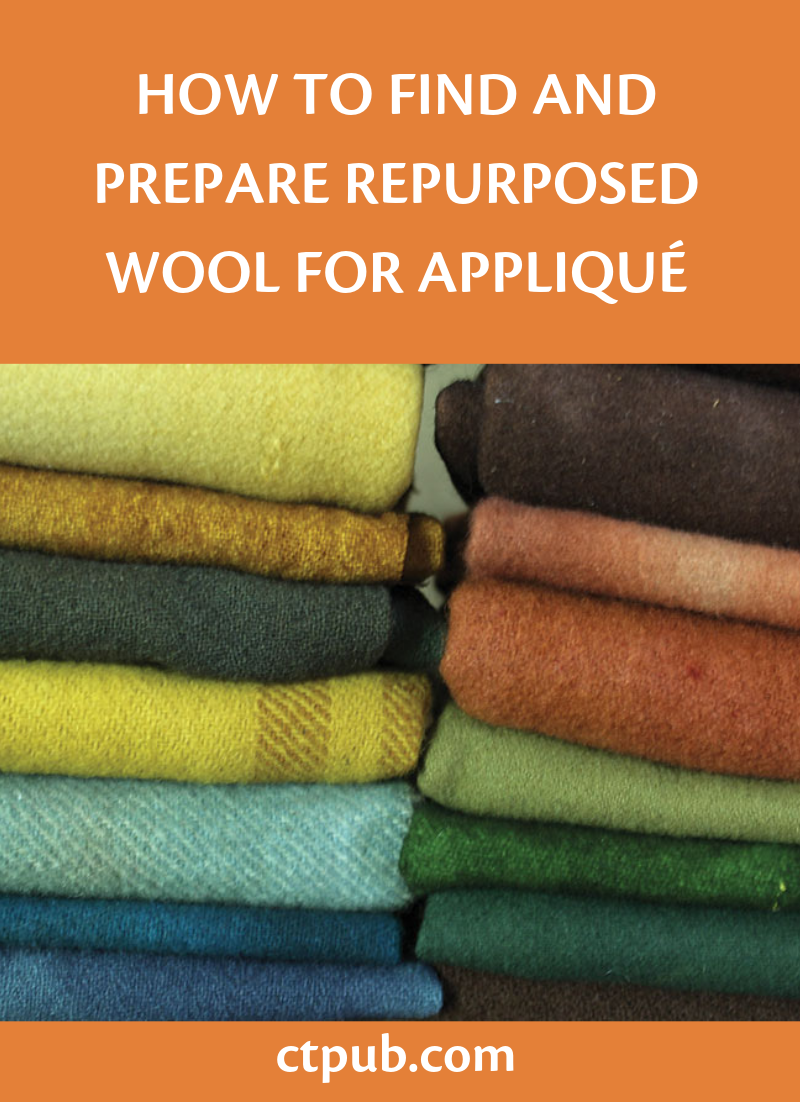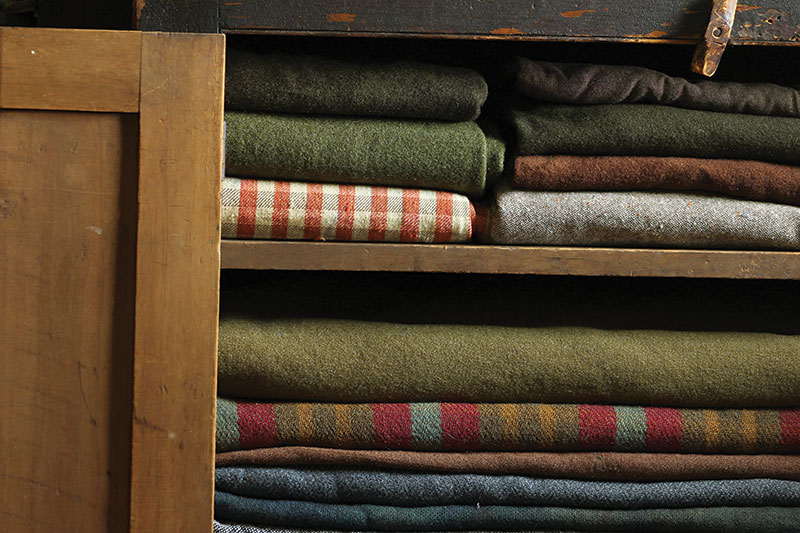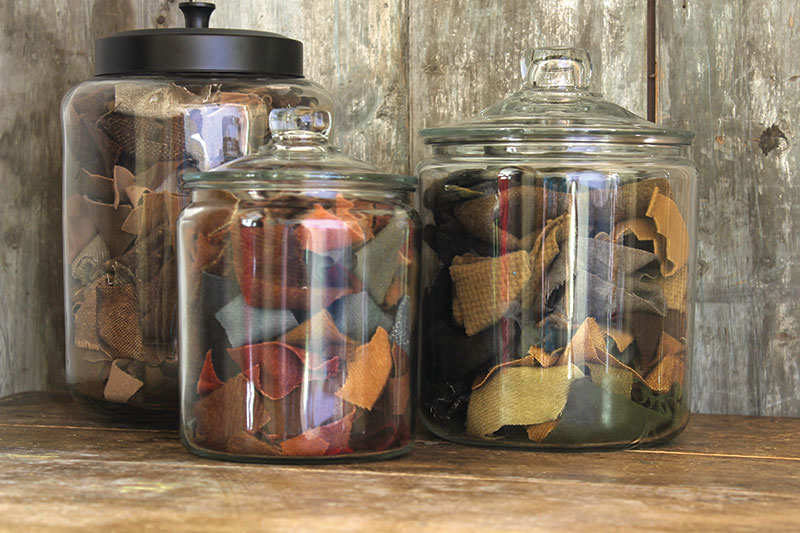How to Find and Prepare Repurposed Wool for Appliqué
Posted by Deirdre Quirk on Jun 18th 2019
The wool trend just won't quit, and no one knows her wool quite like Rebekah L. Smith, author of Wool Appliqué Folk Art. Today we're sharing her expert tips on how to find and process repurposed wool to use for appliqué and other wool projects. Plus, we're offering a giveaway of Wool Appliqué Folk Art! Scroll to the bottom to enter.

Finding Wool
In my wool work I use mostly repurposed wool. I obtain it by going to flea markets, thrift stores, auctions, and yard sales and searching for wool that is really no longer wanted in its current condition but can be processed into something useful. I look for wools that are medium weight, which can be dyed or felted to use in appliqué. These are usually in the form of blankets, skirts, jackets, or even old yardage. Keep an eye out for wools that are plain or only slightly patterned. They are the best to use in appliqué. The other thing to watch for is the color. The lighter the color, the better it is for dyeing or overdyeing.
When buying wool, avoid wool that is too heavy or too light in weight and wool that is loosely woven, because it will fray.
The other option is to buy wool that is already processed from a wool shop or an individual who sells hand-dyed wools. A growing number of sources are available for those of you who would like to start with wool that is ready to go. I recommend Crows on the Ledge and Heavens to Betsy Wool.
Processing Wool
When I use the term processing, I am referring to the necessary steps to go from woven wool to felted wool that is ready to use. This usually includes felting and dyeing. I would like to say that I start with a sheep and finish with beautiful woven wool, but that is not the case.
Felting
Felting is the process of getting the wool to be the right texture for an appliqué project. Some wools felt better than others. The wool fibers must bind together. This keeps the edges from fraying and makes the wool very soft and strong. To felt your wool, follow these three simple steps.
1. You need a large cooking pot that you will not use for cooking ever again. I recommend this because the commercial dyes are often acid-based. Put in the wool you want to felt and add water to the pot, covering the wool with at least an inch of water.
2. Bring the water to a boil and let the wool simmer for about 20 minutes. All wool is different, and you will have to see how the differing weaves react when boiled. Let the water cool before removing the wool.
3. Let the wool drip dry. I drape the wool over a clothesline outside in good weather or hang it over my large wash sink in the winter.
This is how I do it, but there are no hard-and-fast rules about felting. You can also throw the wool in the washer and dryer. Both the agitation and heat will felt the woven wool.

Dyeing
I am not a dyeing expert, but I enjoy the process. When I dye wool, I often use natural dyes. If you want to try your hand using commercial dyes, please read and carefully follow the manufacturer’s instructions. I recommend Primary Fusion Spots with Wool Samples: A Guide to Dyeing Spots & Backgrounds Using Only Three Primaries & Black Pro Chemical Dyes by Ingrid Hieronimus and Antique Colors for Primitive Rugs by Emma Lou Lais and Barbara Carroll (2001, W. Cushing and Company).
Natural dyeing techniques can be a lot of fun as well. My family appreciates that I do this type of dyeing outdoors because of the smell. I have a three-gallon brass kettle that I use for natural dyes as well as felting, and it works wonderfully. I just play around with whatever I can find in my yard or my friends’ yards and see what I come up with. I’ve used black walnuts, goldenrod, and onionskins.
It can be very satisfying to know that you have had more of a hand in your project. Dyeing is certainly not for everyone. I never dreamed that I would take it up, but, well, here we are.

Oh, and you can enter the giveaway we mentioned HERE. Happy wool working!







